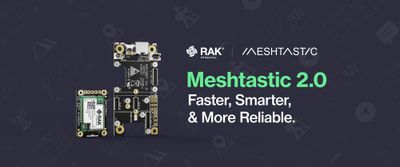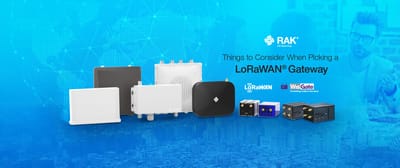8 Frequently Asked Questions About LoRaWAN
As the world of technology shifts towards the internet of things (IoT) which is the interconnection of computing devices embedded in everyday objects through the internet, LoRaWAN, an integral part of the IoT has been chosen as an area of major concentration.
We expect your minds to be loaded with a lot of questions. That is why we have come up with answers to the top five questions people continuously ask. This would provide basic knowledge on all that is needed to know about LoRaWAN.
8 Frequently Asked Questions About LoRaWAN
1. What does LoRaWAN stand for/ What is LoRaWAN?
LoRaWAN stands for Long Range Wide Area Network and is a standard for wireless communications that allows ioT devices to communicate over a long distance.
Read more Everything You Need to Know about LoRaWAN®
2. What then is IoT and what are the examples of IoT devices?
IoT is also known as the Internet of Things and can be defined as the extension of internet connectivity into physical and everyday objects. As said earlier, it allows embedding of internet connection in objects.
Examples of IoT devices include; Google Home Voice Controller, Amazon Dash Button, Kuri Mobile Robot, August Smart Lock amongst many others.
LoRaWAN is very important because it provides low cost and low power mobile communication platform for IoT devices. It supports large networks and millions of devices as it is being compared to the 3G and 4G coverage for smartphones. The key features include geolocation because it enables GPS-free and low power tracking applications, low cost, low power, long range, high security, high standard and high capacity.
Read more IoT Networks: Everything You Need to Know
3. What is the difference between LoRa and LoRaWAN?
It is easy to think that LoRa is the same as LoRaWAN, after all, they sound alike and contain almost the same words but they are slightly different.
LoRa, known as Long Range, is the wireless modulation or simply put, the physical layer which creates the long range communication link while LoRaWAN (with the inclusion of Wide Area Network) is a network protocol using LoRa chips for the communication.
In other words, LoRaWAN is the network.
Read more Decoding LoRa Technology: Understanding the Differences Between LoRaWAN®, LoRa P2P, and LoRa Mesh
4. What then is the relationship between them?
LoRa and LoRaWAN can be likened to an engine and its fuel where LoRa is the fuel and LoRaWAN is the entire engine. The fuel is needed for the engine to start, hence LoRaWAN cannot be effective without LoRa.
Now, let us imagine the device is the vehicle. A vehicle undoubtedly needs a fully effective engine and fuel to start and move. In the absence of a good engine but sufficient fuel, will the vehicle still move? No. This means there can be a good control system, LoRa to act as a transmitter of messages but something needs to ensure that the messages transmitted are used properly, this is LoRaWAN.
It ensures that the signals are linked to the application. Hence, it can be said that LoRa is the transmitter and LoRaWAN is the network.
5. What is The Things Network and how is it different from LoRaWAN?
The Things Network (TTN) is a project dedicated to building a free data network for the Internet of Things. It allows devices connect to the internet and it is free to use. The aim of the internet of things is targeted at low power and low cost which makes the TTN free unlike cellular data or WiFi which drains cost and power. TTN uses LoRaWAN which uses LoRa technology to connect many devices to the internet.
6. What is LoRaWAN bandwidth, and is it totally free of charge?
Bandwidth is the maximum rate of data transfer across a given path. Data rate relies on bandwidth and spreading factor, LoRaWAN can use channels with a bandwidth of 125 kilohertz (kHz), 250 kHz or 500 kHz.
LoRaWAN uses unlicensed frequencies and no subscription is required from a telecommunication operator, hence, it is considered free to an extent until after putting out the infrastructures for application.
7. What are the advantages of LoRaWAN?
- It operates on free unlicensed frequency, there is no upfront licensing cost to use the technology
- Devices have high battery life due to lower power and sensor batteries could last for 2-5 years
- Sensors are low powered and there is wide coverage area measured in kilometers
- Single LoRa Gateway device can take care of thousands of end devices or nodes
- Its simple architecture gives way for easy deployment
- Maximum number of daily messages are not restricted
- It is an open technology
- It is widely applied in IoT
- It boasts of better payload size
- It can be an alliance with an open approach
- It is highly secured with AES encryption
- Low connectivity costs
- It is wireless and easy to set up
- It is backed up by CISCO, IBM (International Business Machines) and other member companies of the LoRa Alliance.
8. What is the maximum rate of data LoRaWAN can transfer and is it totally free?
The maximum rate of data transfer across a given path is known as bandwidth. Data rate relies on bandwidth and spreading to factor.
LoRaWAN can use channels with a bandwidth of 125 kilohertz (kHz), 250 kHz or 500 kHz. LoRaWAN also uses unlicensed frequencies and no subscription is required from a telecommunication operator. Hence, it is considered free to an extent and perhaps, licensing may require payment of some fees.
And Now You Know
We hope we’ve provided good and knowledgeable answers to these questions. We would love to hear from you if you have other questions or are willing to contribute to the RAKwireless LoRaWAN technology.
Do not hesitate to contact us to work together to benefit from this amazing technology.
Read more How AI and IoT Are Revolutionising the Industrial Sector





